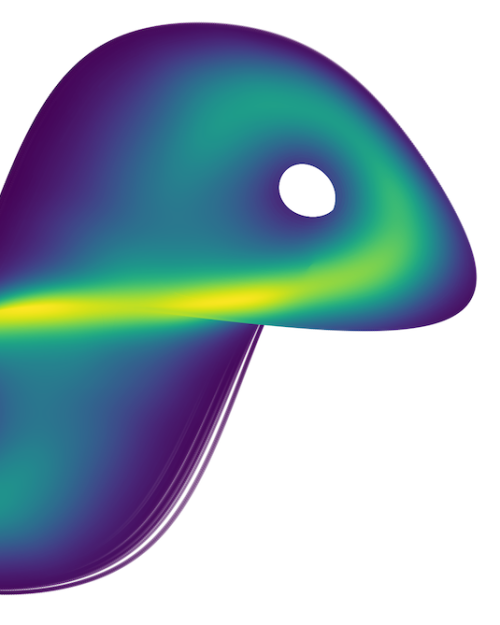Many of the world's most important systems, such as the atmosphere, turbulent fluids, and even the motion of planets, behave unpredictably due to chaos and noise. Scientists often study these systems through their “invariant” measures, long-term statistical behaviors, rather than individual paths. While useful, these measures have a fundamental limitation: completely different systems can share the same statistics, making it impossible to identify the underlying dynamics.
Researchers led by mathematician Yunan Yang have introduced a new way forward, using time-delay snapshots. Their work, “Invariant Measures in Time-Delay Coordinates for Unique Dynamical System Identification,” was published in Physical Review Letters Oct. 17.
An invariant measure is a way of assigning size or probability to parts of a system that remain unchanged when the system is transformed or evolves. Time-delay snapshots use invariant measures that are expressed in time-delay coordinates – linking present observations to their past values – and providing enough information to distinguish between systems.
Translating these theoretical results into computational tools, the researchers were able to demonstrate their effectiveness with physical examples.
“This breakthrough offers a robust method for uncovering the rules underlying complex phenomena, opening up new possibilities for tasks such as weather prediction, spacecraft design and the analysis of chaotic data in science and engineering,” said Yang, the Goenka Family Assistant Professor in Mathematics in the College of Arts and Sciences.
Jonah Botvinick-Greenhouse, a doctoral candidate in the field of applied mathematics, was a co-author on the paper, as was Robert Martin, DEVCOM Army Research Laboratory.
The work was supported with funding from the National Science Foundation and the Department of Defense.
Yang said she was drawn to the topic because it’s like solving a puzzle. “You are given the data that represents some underlying physics or engineering quantities and it's your job to really unravel the data and see what’s causing it. But the problem is when you cannot uniquely identify the quantities -- there are two different models that give you the same data, so you can’t tell them apart. We need to have a unique representation, so that's the motivation for our work.”
Their technique can be applied to answer questions in biology, since living things change over time; in psychology, since humans change their behavior over time; in engineering, such as the drag of air flow on airplanes or the flow of traffic, and in other fields.
“We use the time dynamic equations to model the underlying causes, and it can be as important as the likelihood of transmitting viruses like Covid.”
The work took more than a year, but Yang says she was never afraid of getting stuck. “Mathematicians are always dealing with problems without an answer. We like the challenges.”
Linda B. Glaser is news and media relations manager for the College of Arts and Sciences.





